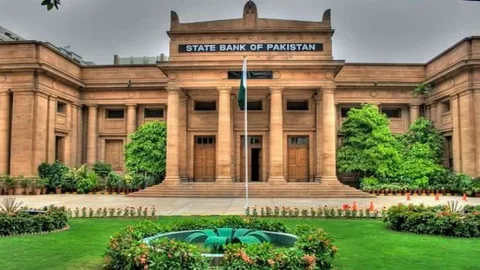The State Bank of Pakistan (SBP) stands at the forefront of Pakistan’s economic governance, playing a pivotal role in steering monetary policies, regulating the banking sector, and ensuring financial stability. As we step into 2024, the SBP’s decisions hold significant implications for businesses, investors, and individuals alike. With rapid economic shifts and global challenges, staying informed about the SBP’s latest policies is not just an advantage but a necessity. This article delves into the most recent updates, providing a comprehensive breakdown of what they mean for Pakistan’s economy and its citizens.
2. Overview of the State Bank of Pakistan (SBP)
Role and Responsibilities
The State Bank of Pakistan is the country’s central bank, responsible for maintaining monetary stability and fostering economic growth. Key responsibilities include:
- Monetary Policy Management: Regulating inflation and stabilizing the currency.
- Supervision of Financial Institutions: Ensuring the soundness of banks and non-banking financial companies.
- Issuance of Currency: Managing the production and circulation of the Pakistani Rupee (PKR).
- Economic Research and Policy Development: Guiding fiscal policies in collaboration with the government.
Historical Context
Established in 1948, the SBP has witnessed numerous economic cycles and crises. Over the decades, it has adapted to challenges ranging from global recessions to domestic fiscal instability. Its continuous evolution reflects its commitment to fostering economic resilience and innovation.
3. Key Highlights of Recent SBP Policies (2024)
Latest Monetary Policy Changes
In December 2024, the SBP announced a reduction in the policy rate by 200 basis points—a bold move aimed at stimulating economic activity. This marks the fifth consecutive rate cut in a bid to encourage borrowing, investment, and consumer spending. By easing the cost of financing, the central bank hopes to counter the sluggish economic growth observed in 2023.
Currency Stabilization Measures
To address the persistent volatility of the PKR, the SBP introduced new interventions in the foreign exchange market. These include:
- Strengthened Monitoring: Enhanced oversight to curb speculative trading in forex markets.
- Foreign Reserve Optimization: Strategic agreements to secure foreign inflows, bolstering reserves and stabilizing the PKR against major currencies.
Banking Sector Reforms
Recognizing the need for a robust financial sector, the SBP has rolled out significant reforms, including:
- Increased Capital Requirements: Ensuring banks maintain higher reserves to withstand economic shocks.
- Enhanced Cybersecurity Protocols: Mandating stronger measures to protect against digital threats as online banking gains traction.
- Support for SME Financing: Facilitating small and medium enterprises’ access to affordable credit to boost economic growth.
Digital Transformation and Financial Inclusion
The SBP’s ongoing emphasis on financial inclusion is evident in its policies for 2024. Key initiatives include:
- Expansion of Digital Wallets: Encouraging mobile banking services to bring unbanked populations into the formal economy.
- Regulatory Sandbox for Fintechs: Creating a framework for testing and deploying innovative financial technologies.
- Gender-Focused Programs: Special schemes to enhance women’s participation in the financial ecosystem.
4. Implications of SBP’s Policies on Pakistan’s Economy
For Businesses
Businesses stand to benefit significantly from reduced borrowing costs due to the policy rate cuts. Sectors such as manufacturing, real estate, and retail are likely to experience a surge in activity as financing becomes more affordable. Furthermore, small businesses will gain access to targeted credit facilities, empowering them to expand operations and drive employment.
For Individuals
The SBP’s monetary easing translates to lower interest rates on personal loans, mortgages, and car financing. However, depositors may see reduced returns on savings accounts. The focus on digital wallets and mobile banking will also make financial transactions more accessible, especially in rural areas.
For International Trade
The SBP’s measures to stabilize the PKR will help exporters and importers plan their operations with greater predictability. A stable currency fosters investor confidence, attracting much-needed foreign direct investment (FDI).
5. Expert Opinions and Insights
Economists Weigh In
Leading economists have lauded the SBP’s proactive measures. Dr. Asad Zaman, a renowned economic analyst, noted that “the rate cuts are timely and necessary to revive economic momentum.” However, he cautioned against over-reliance on monetary policy, emphasizing structural reforms as a complementary strategy.
Public Reaction
Business leaders have welcomed the SME-focused initiatives, calling them a “game-changer” for local enterprises. On the other hand, some concerns have been raised regarding inflationary pressures that might arise due to increased money supply.
6. Comparative Analysis: SBP vs. Regional Central Banks
Policy Trends in South Asia
The SBP’s recent rate cuts align with similar actions by regional central banks, such as the Reserve Bank of India (RBI) and Bangladesh Bank. However, Pakistan’s unique challenges, such as a higher debt-to-GDP ratio and lower foreign reserves, demand a more cautious approach.
Key Takeaways for Pakistan
- Proactive Policies: The SBP’s focus on digital transformation mirrors global trends, ensuring Pakistan remains competitive in the fintech space.
- Balancing Growth and Stability: While regional peers prioritize growth, the SBP’s emphasis on currency stability underscores its commitment to long-term resilience.
7. Looking Ahead: What to Expect from SBP in 2024
Future Policy Directions
As economic challenges persist, the SBP is likely to pursue policies that strike a balance between stimulating growth and containing inflation. Anticipated measures include:
- Continued Rate Adjustments: Further cuts or stabilizations based on inflation trends.
- Green Financing Initiatives: Encouraging investments in sustainable energy and environmental projects.
- Stronger Regulatory Oversight: Enhancing transparency and accountability in the banking sector.
Challenges and Opportunities
The SBP faces several hurdles, including external debt servicing and geopolitical uncertainties. However, opportunities such as CPEC-driven growth and digital innovation offer avenues for economic revival.
8. Conclusion
The State Bank of Pakistan’s policies for 2024 reflect a determined effort to address economic challenges while paving the way for growth and innovation. From monetary easing to digital transformation, the SBP’s initiatives are designed to foster resilience and inclusivity. For businesses, individuals, and investors, staying informed about these updates is essential to navigate the evolving economic landscape effectively. Keep following reliable sources like Daily Pakistan News for the latest insights and analysis on Pakistan’s financial sector.



